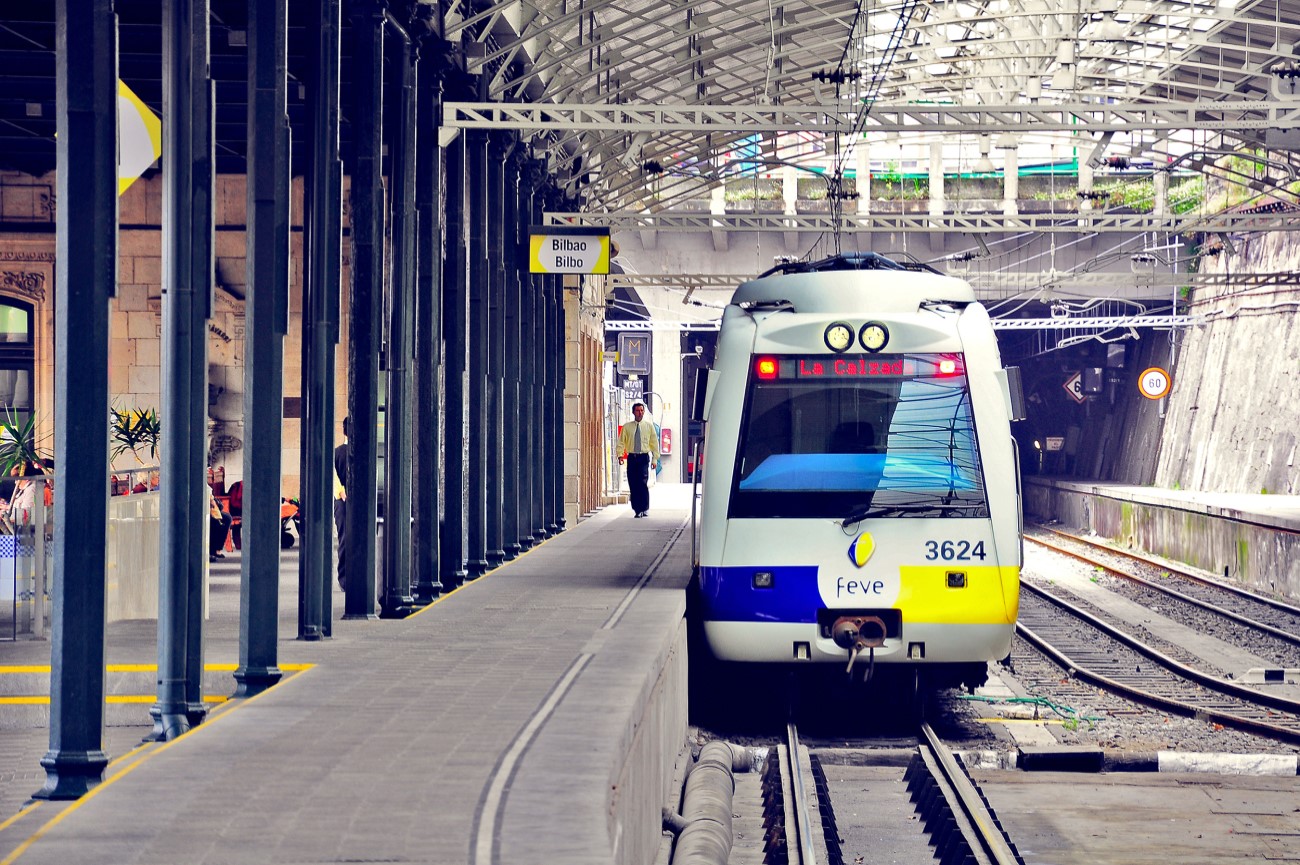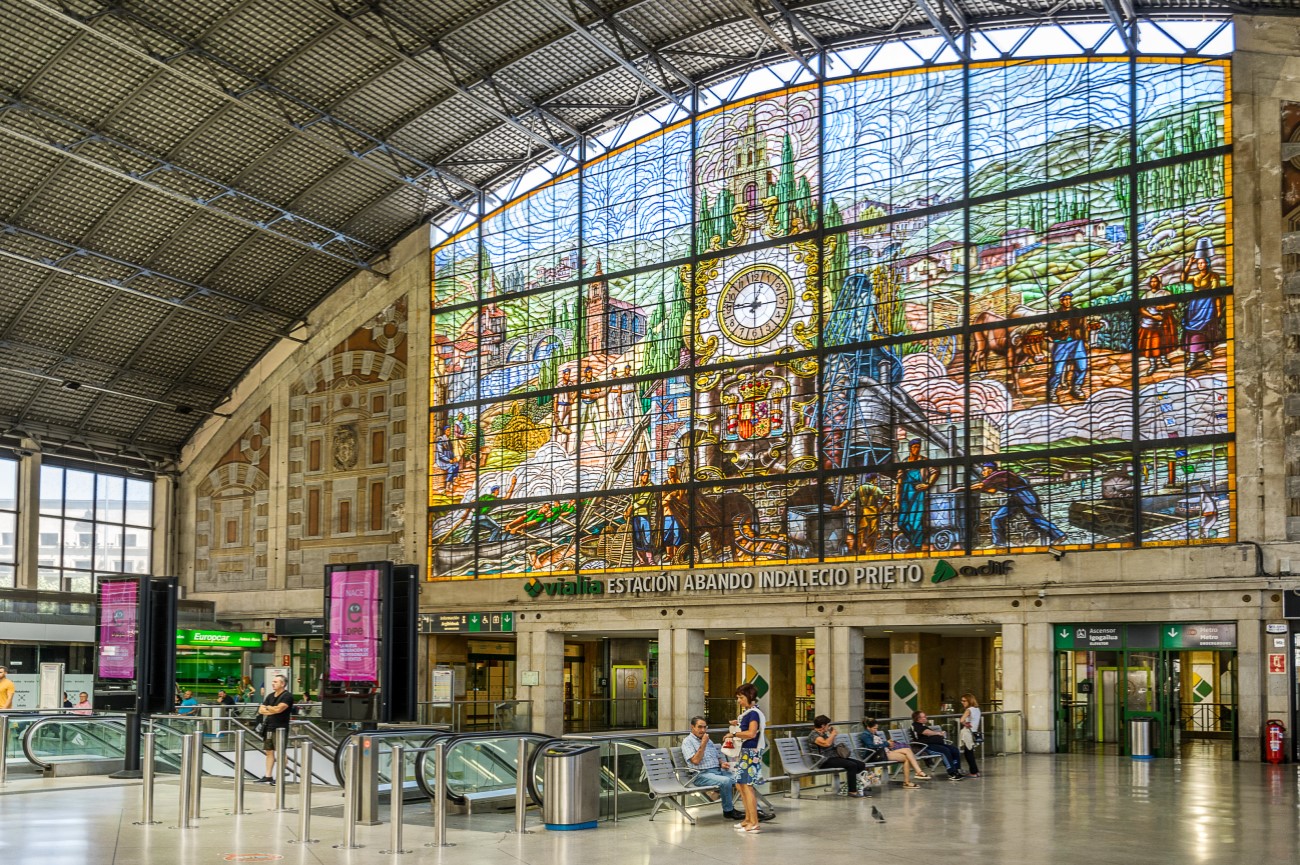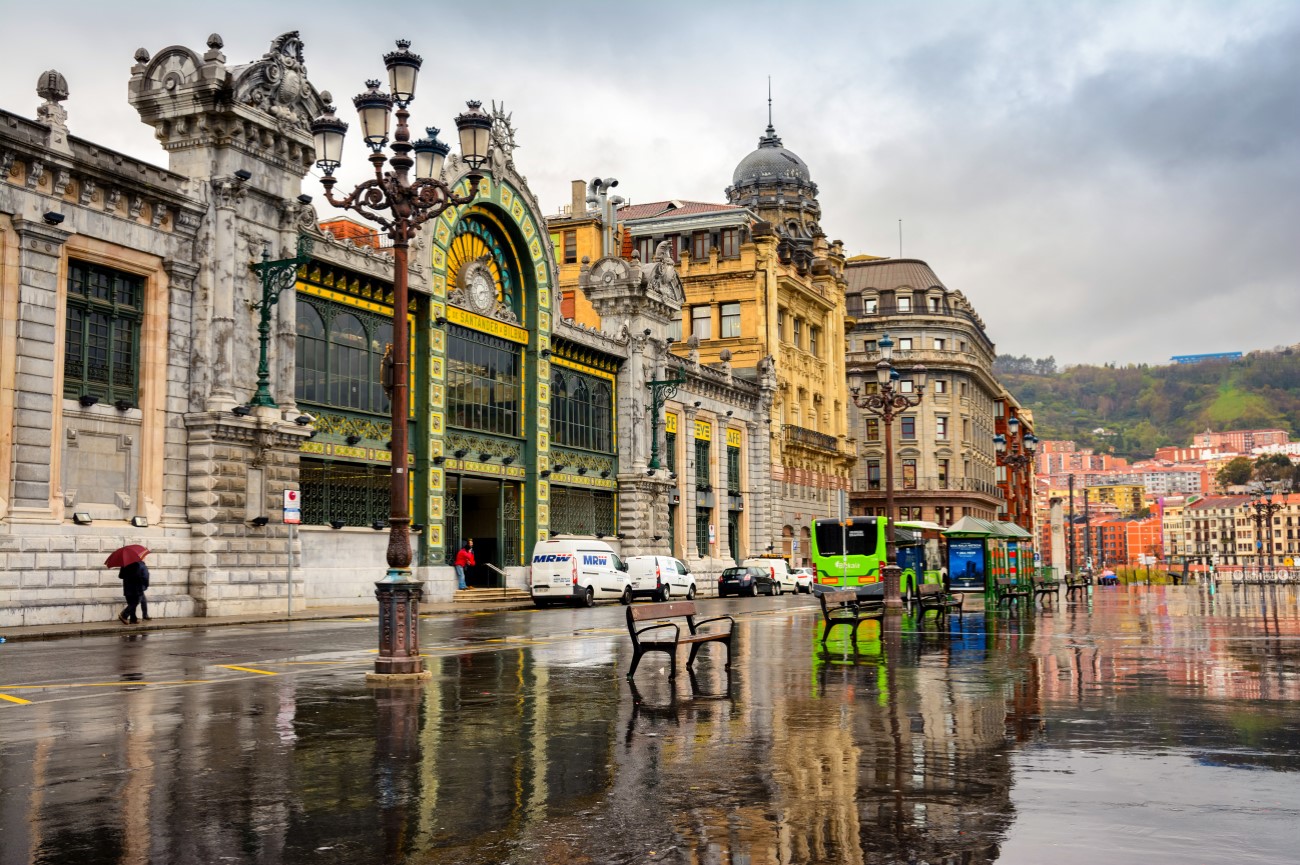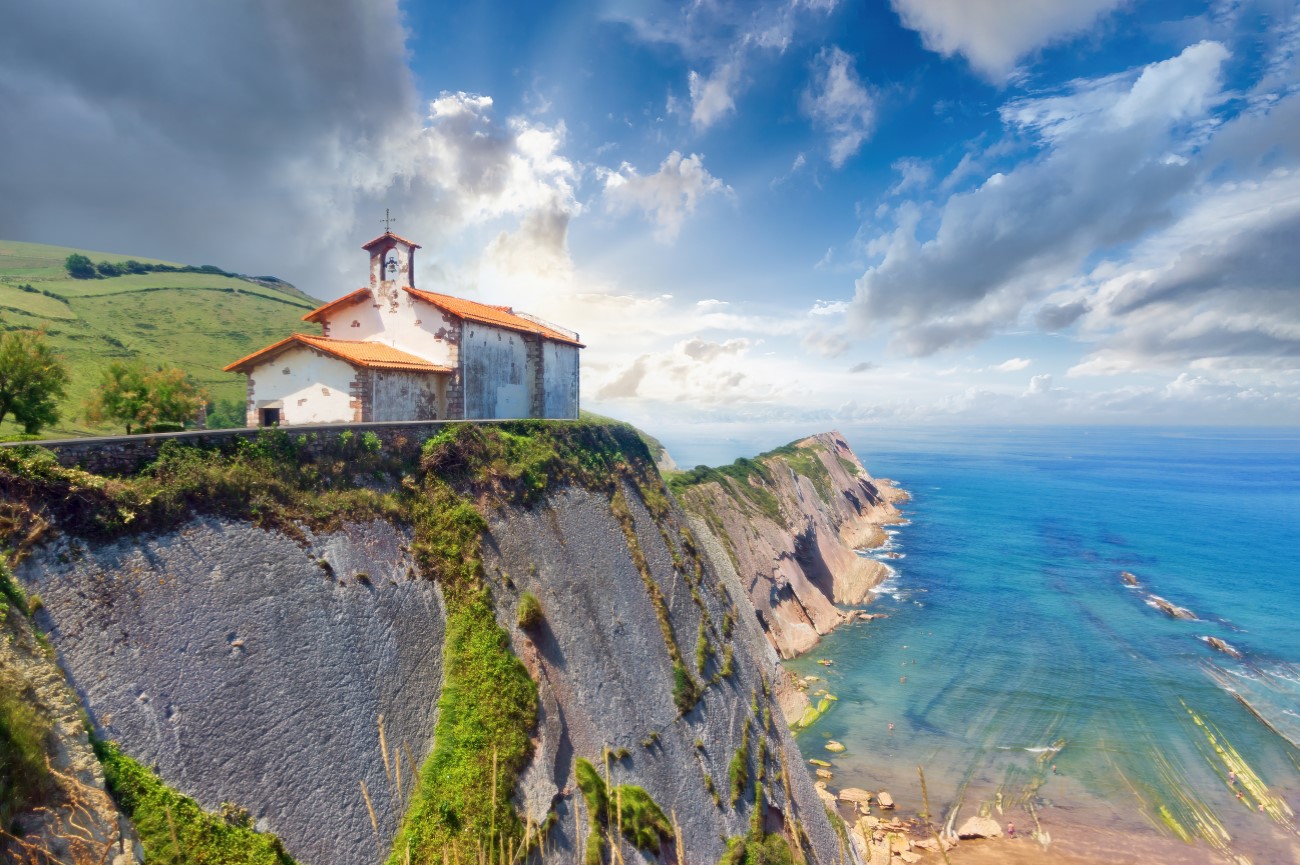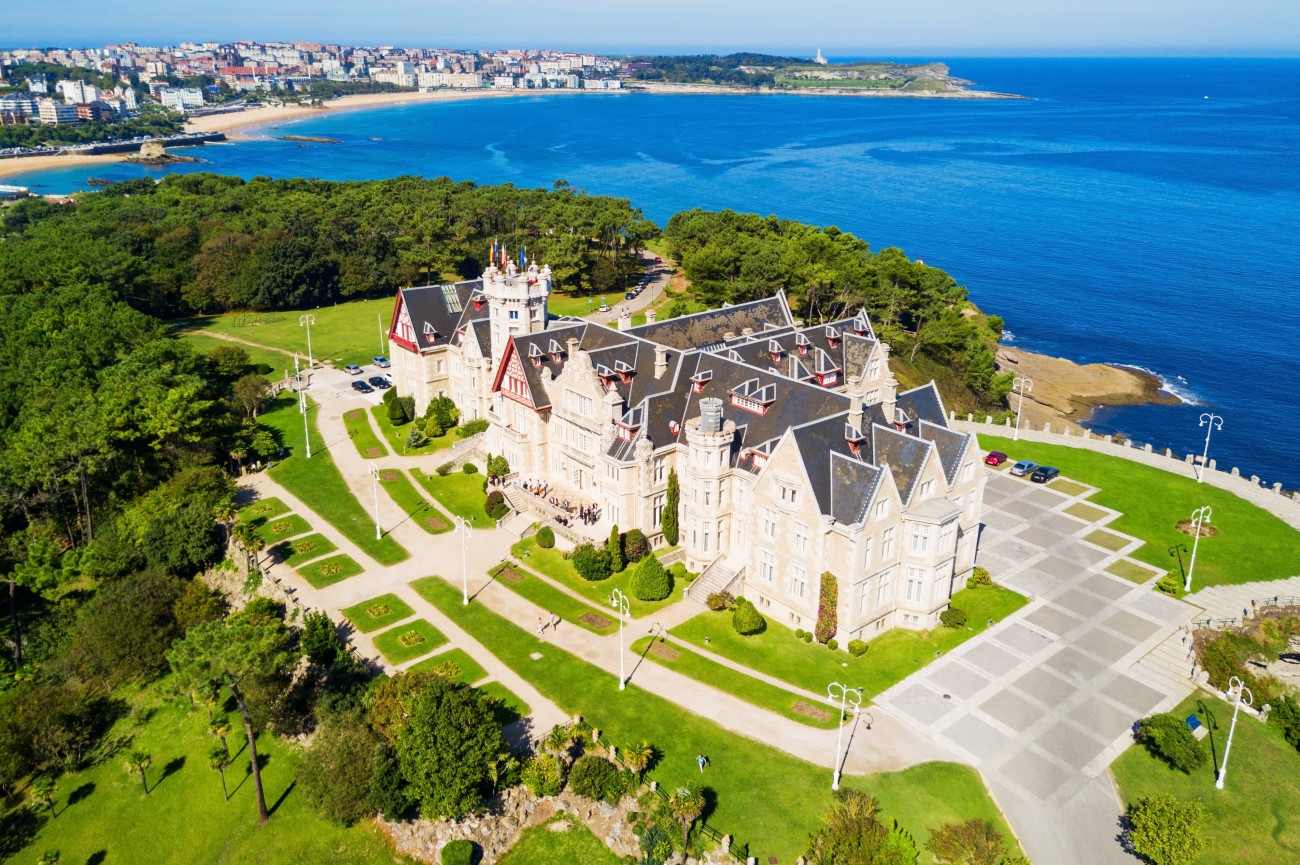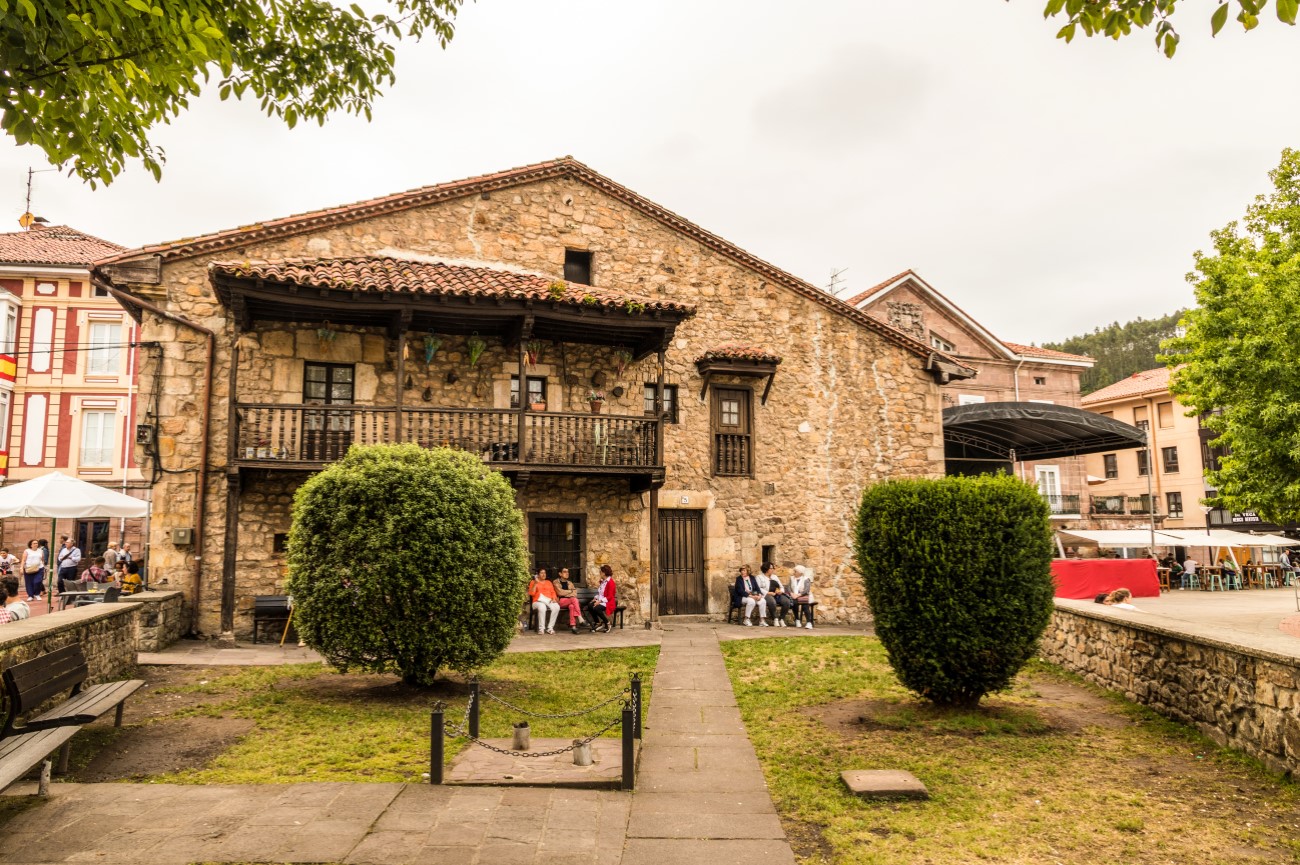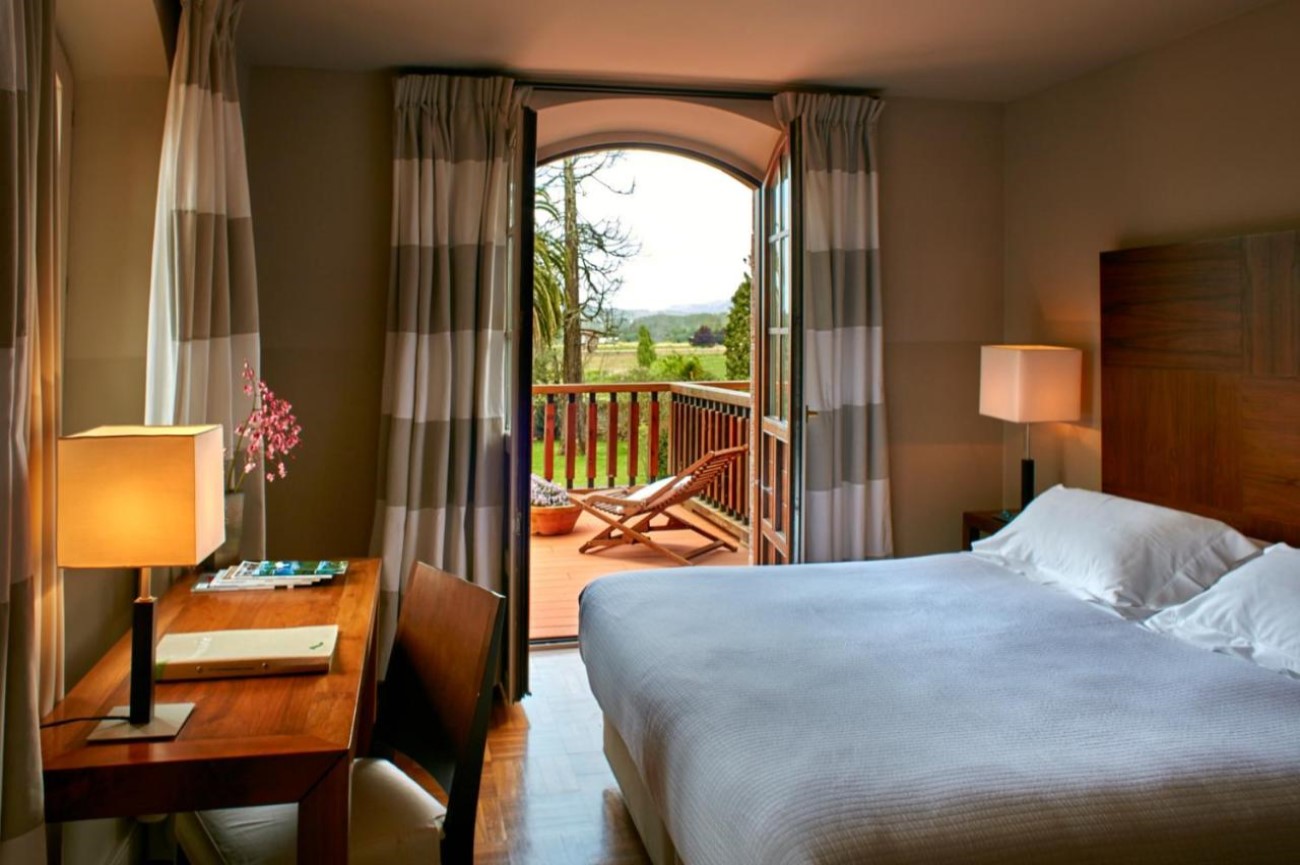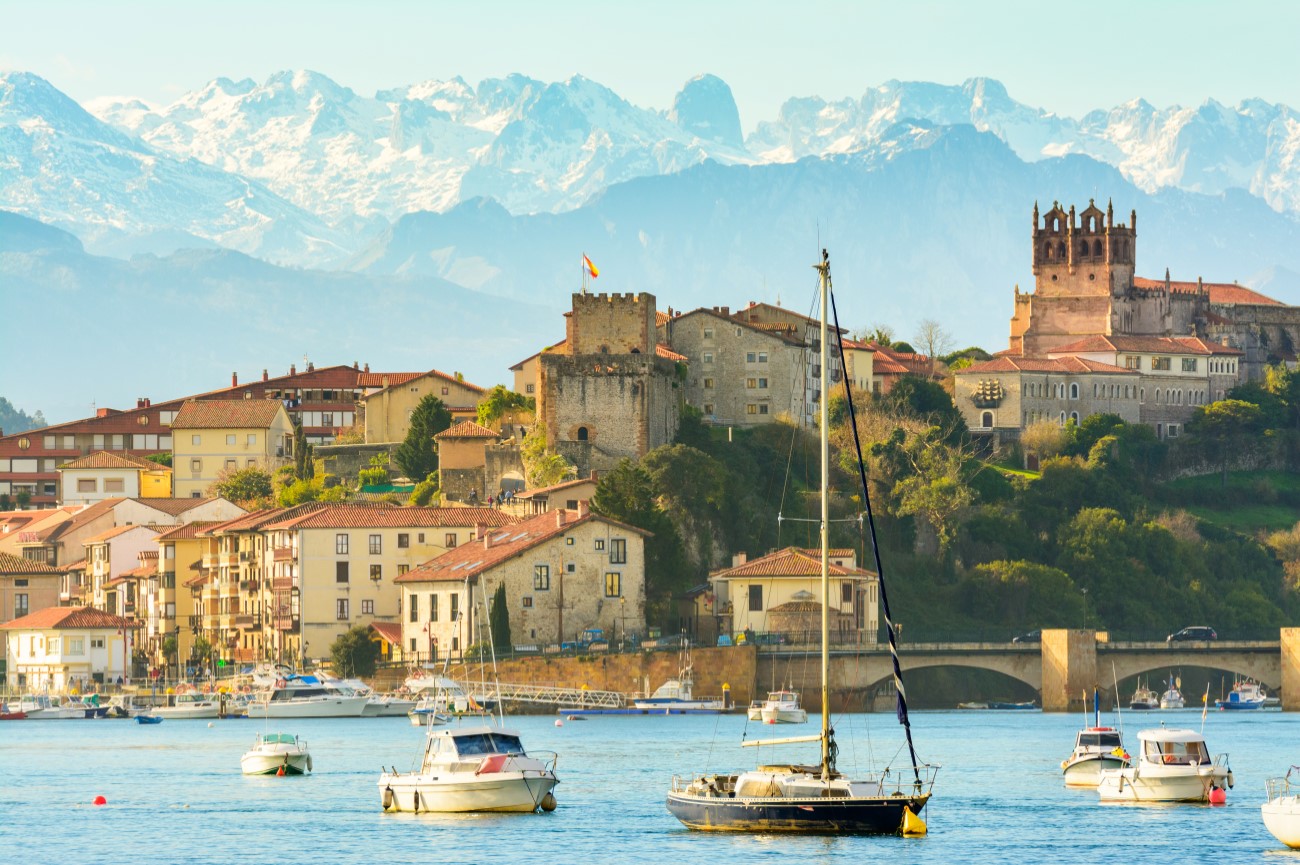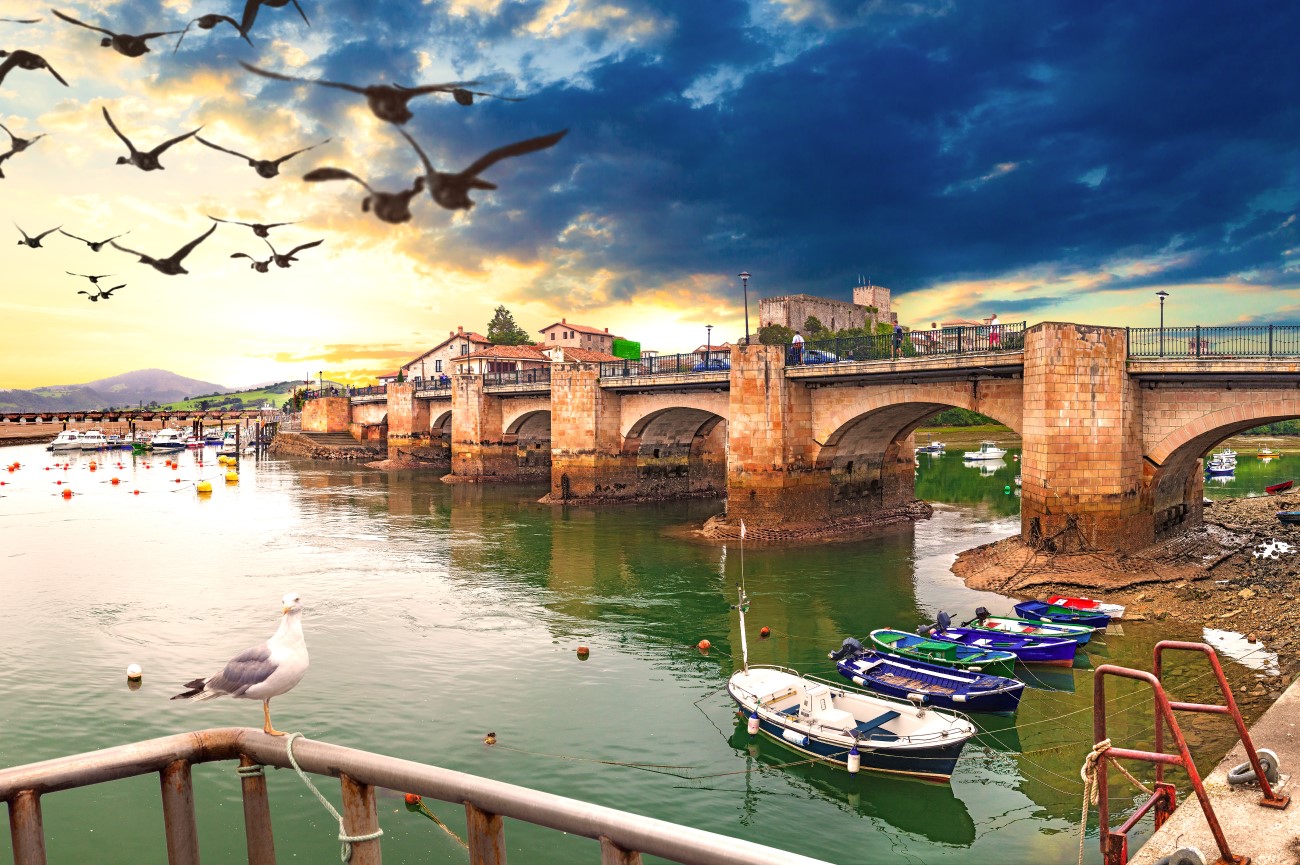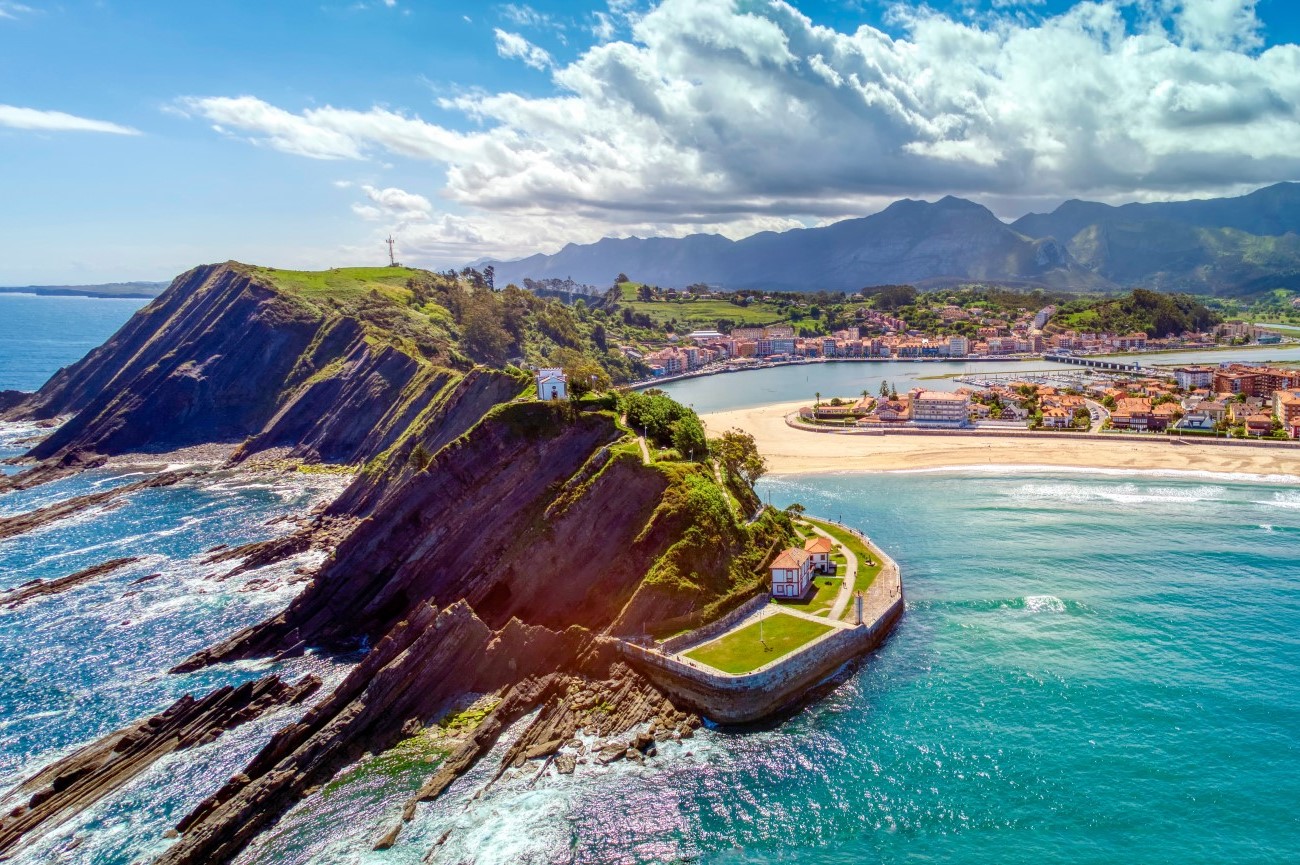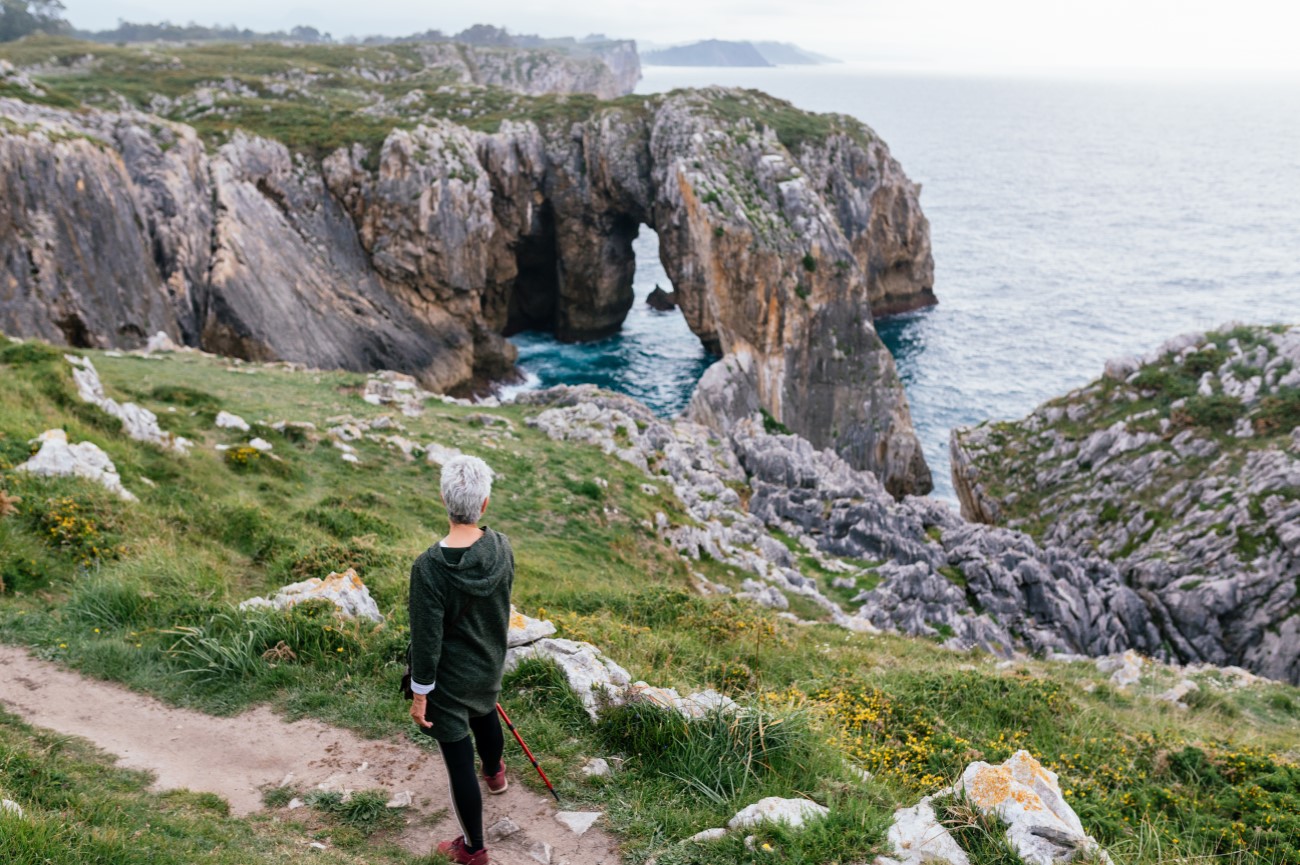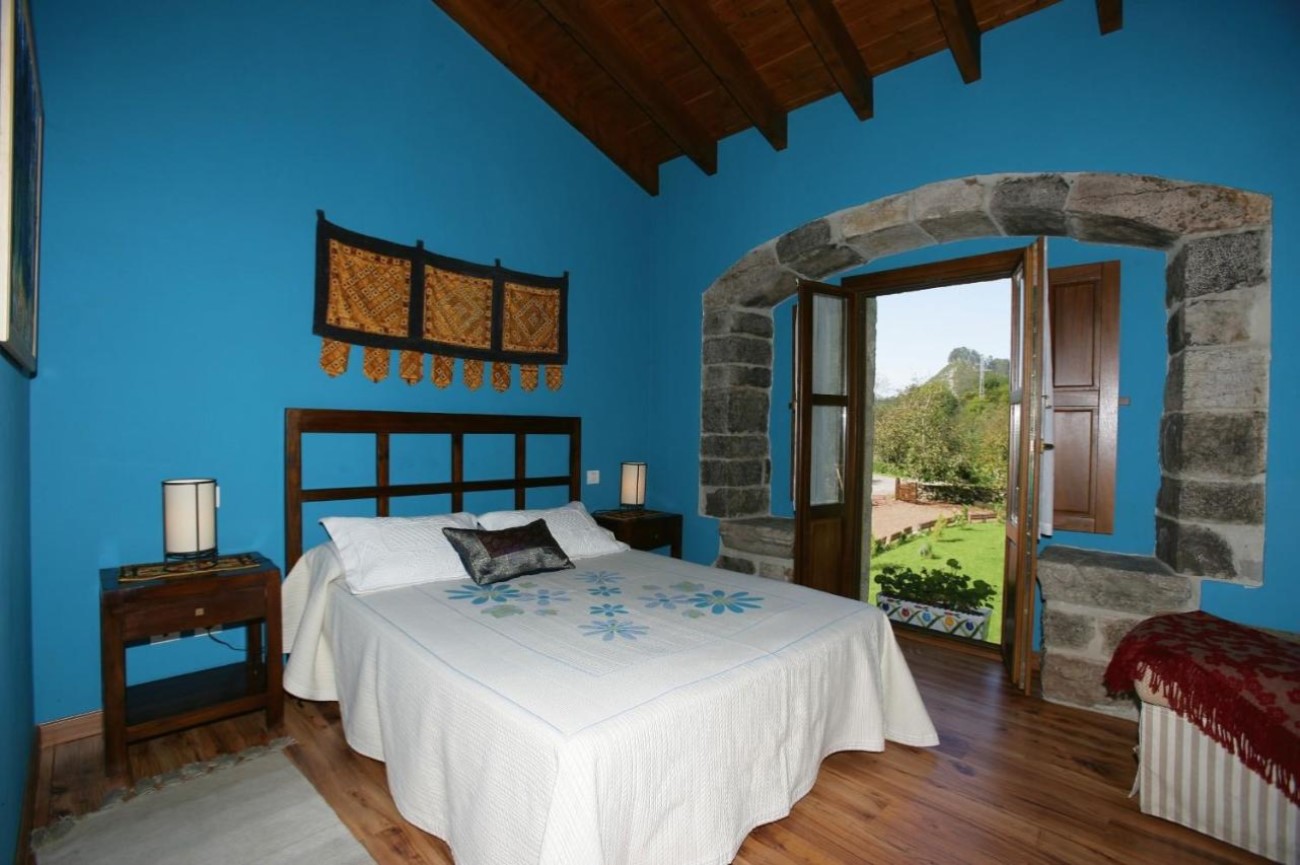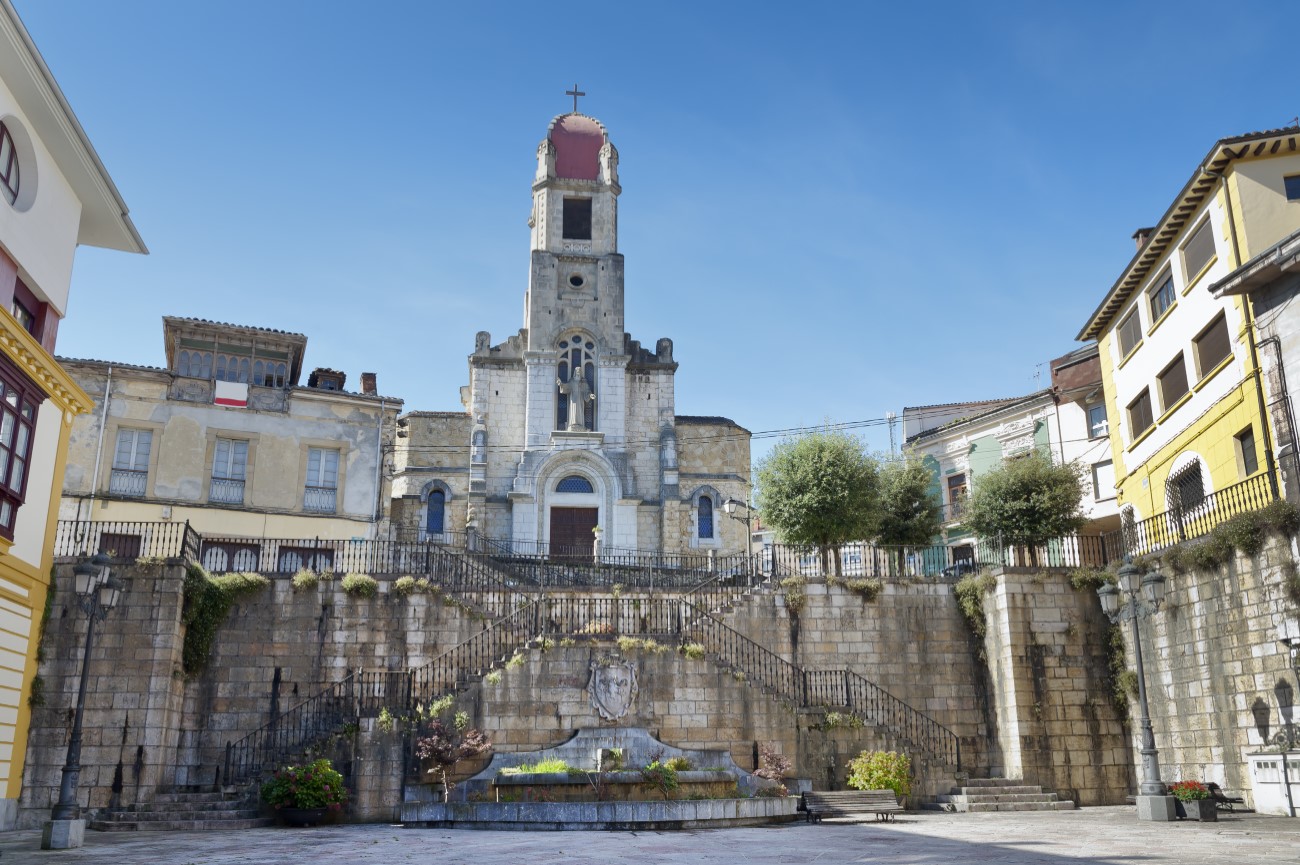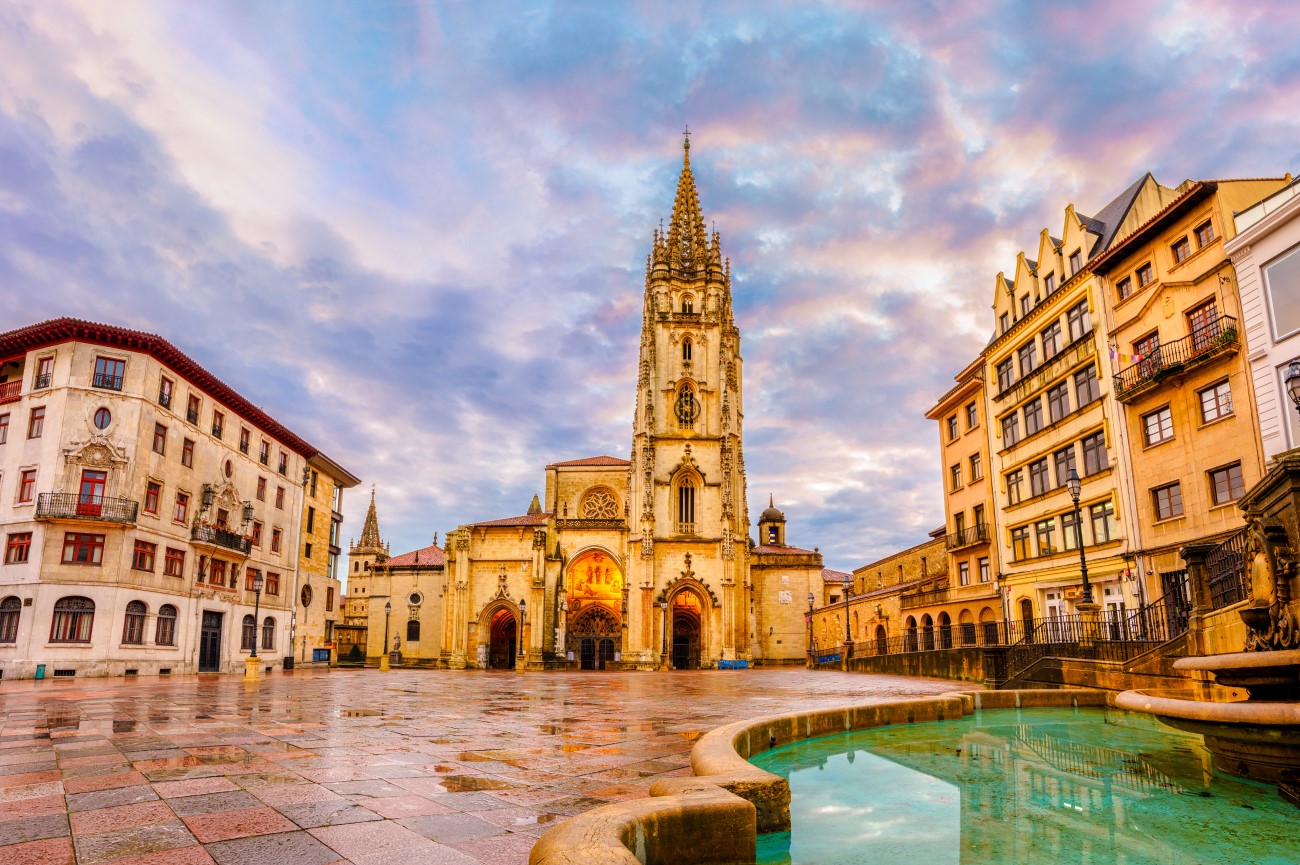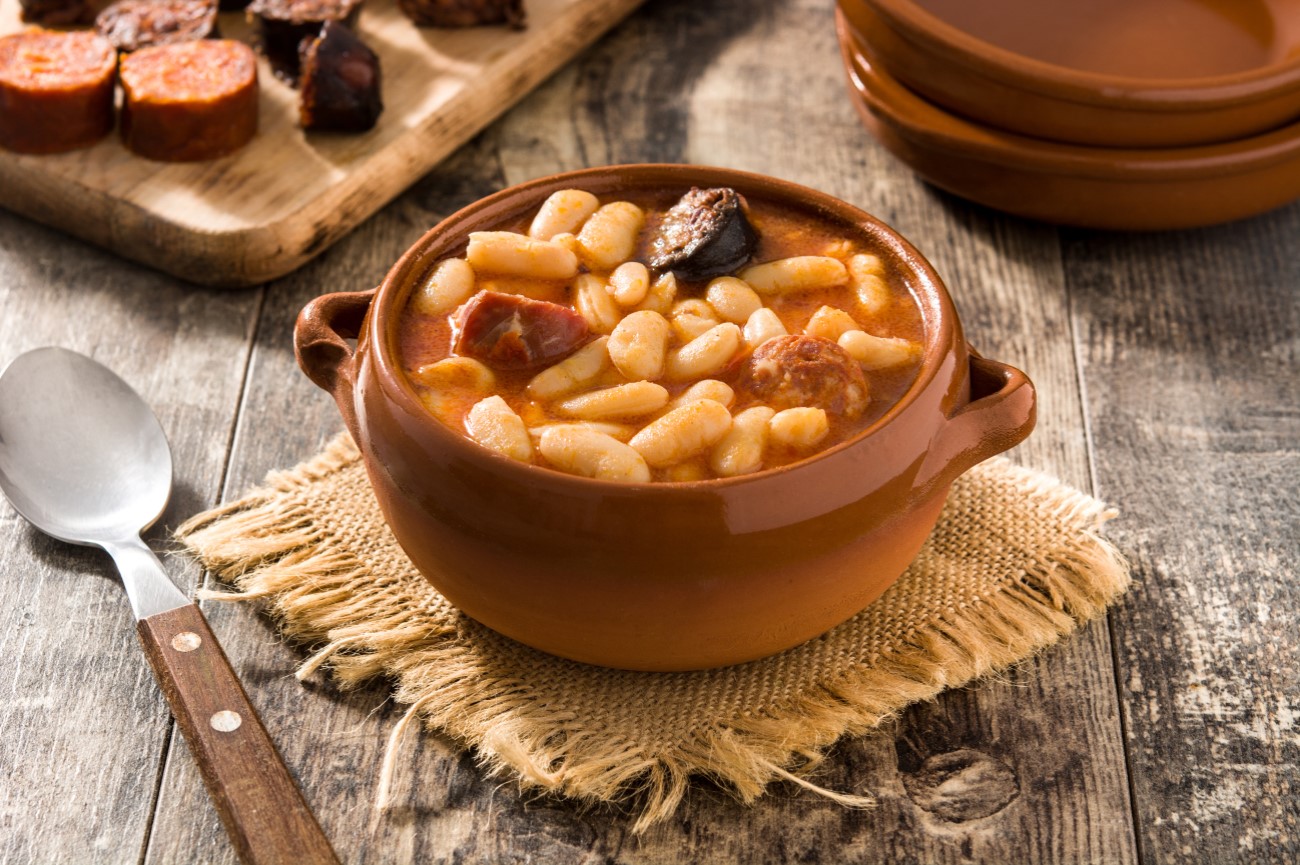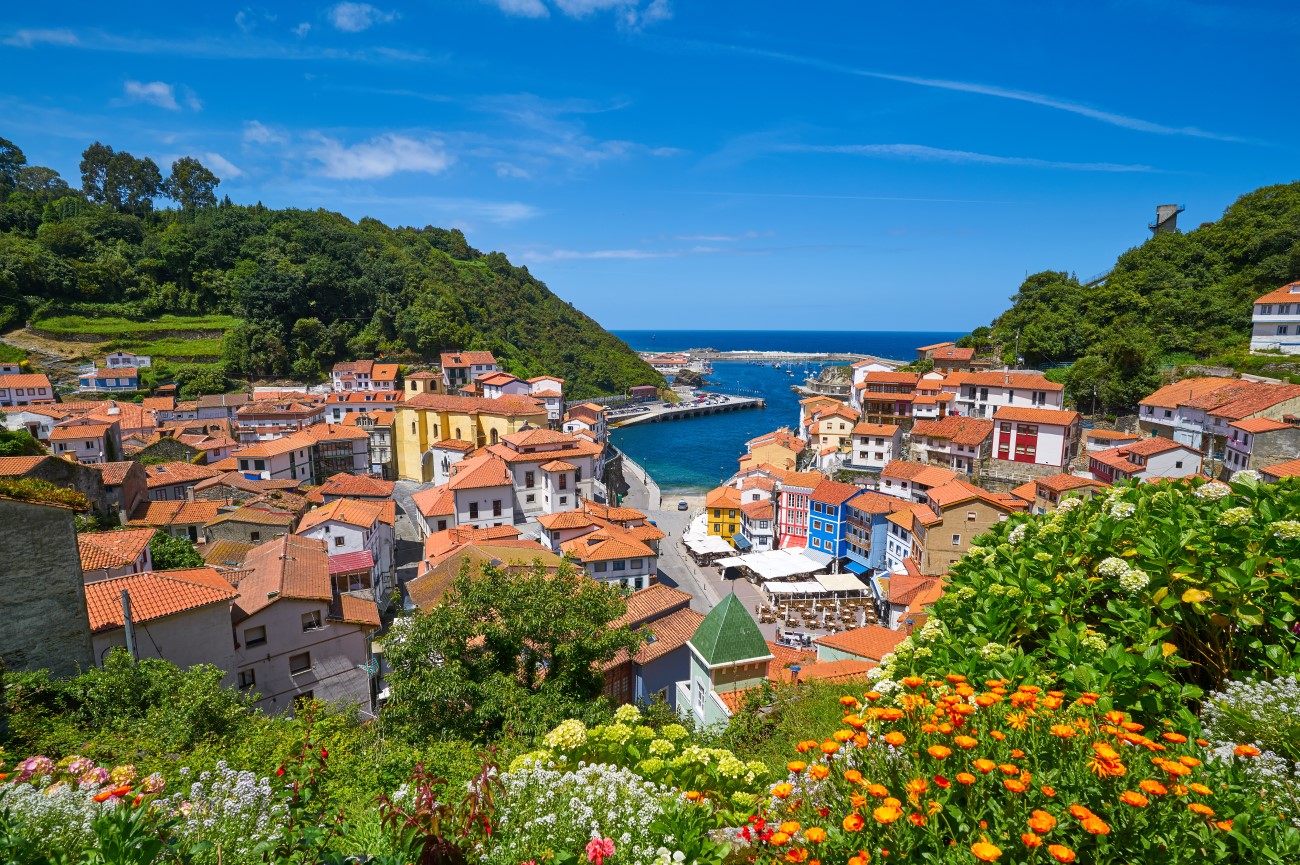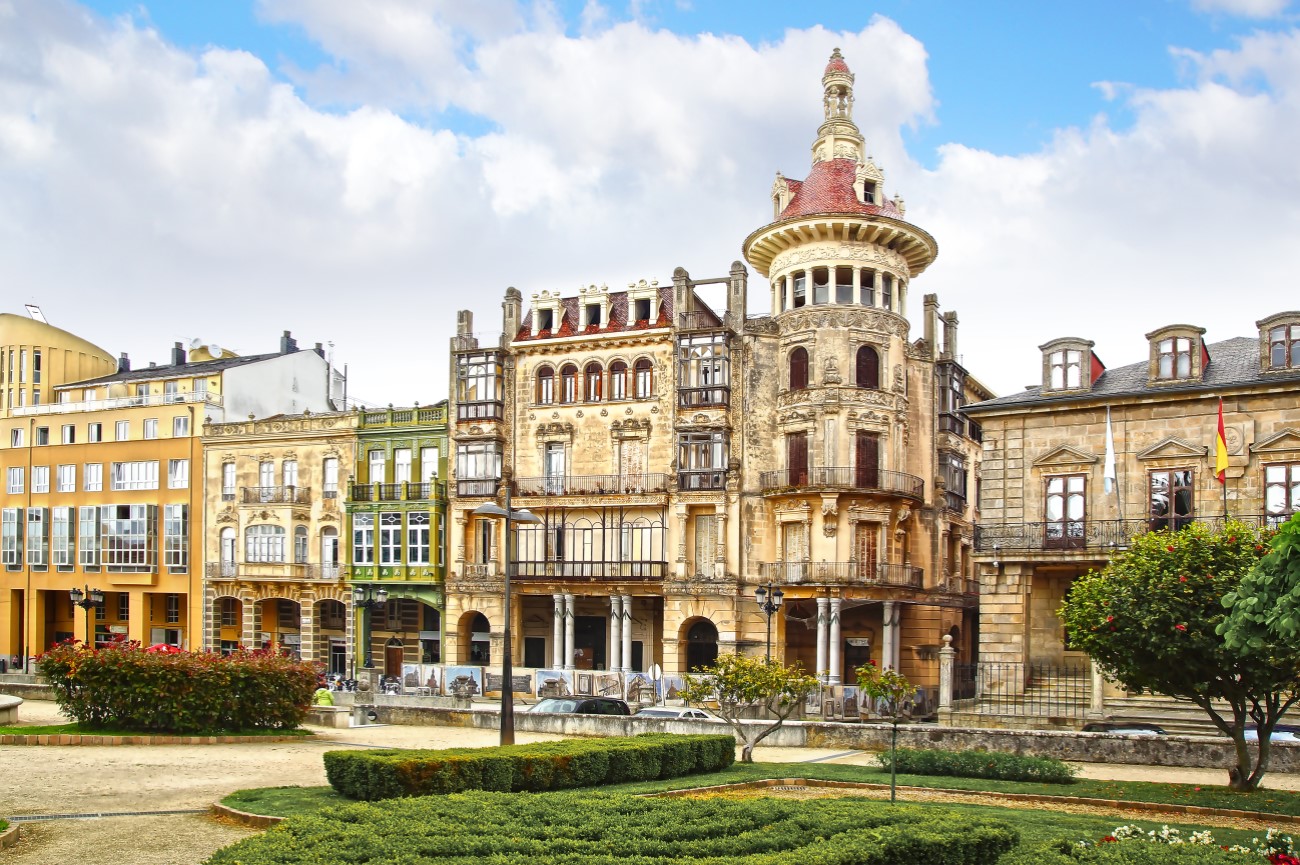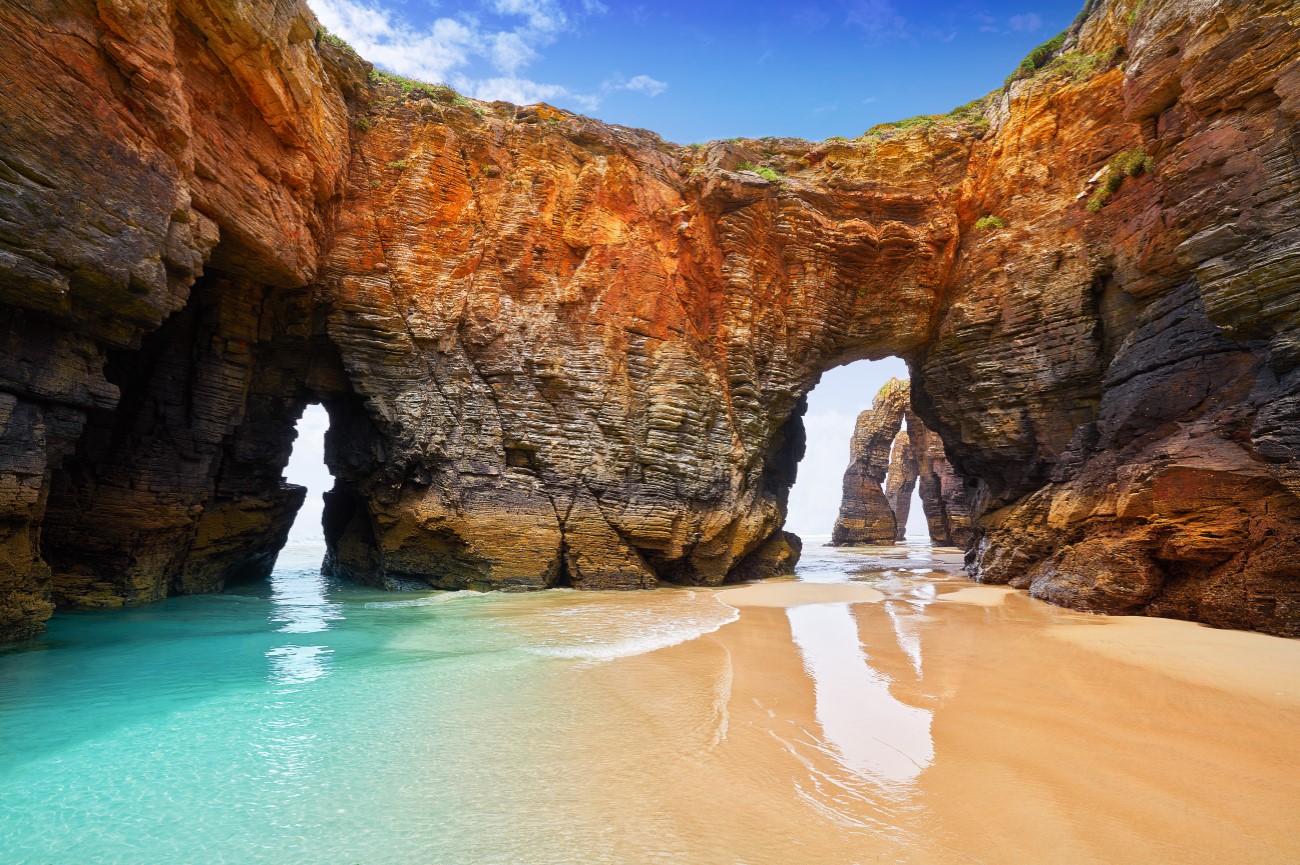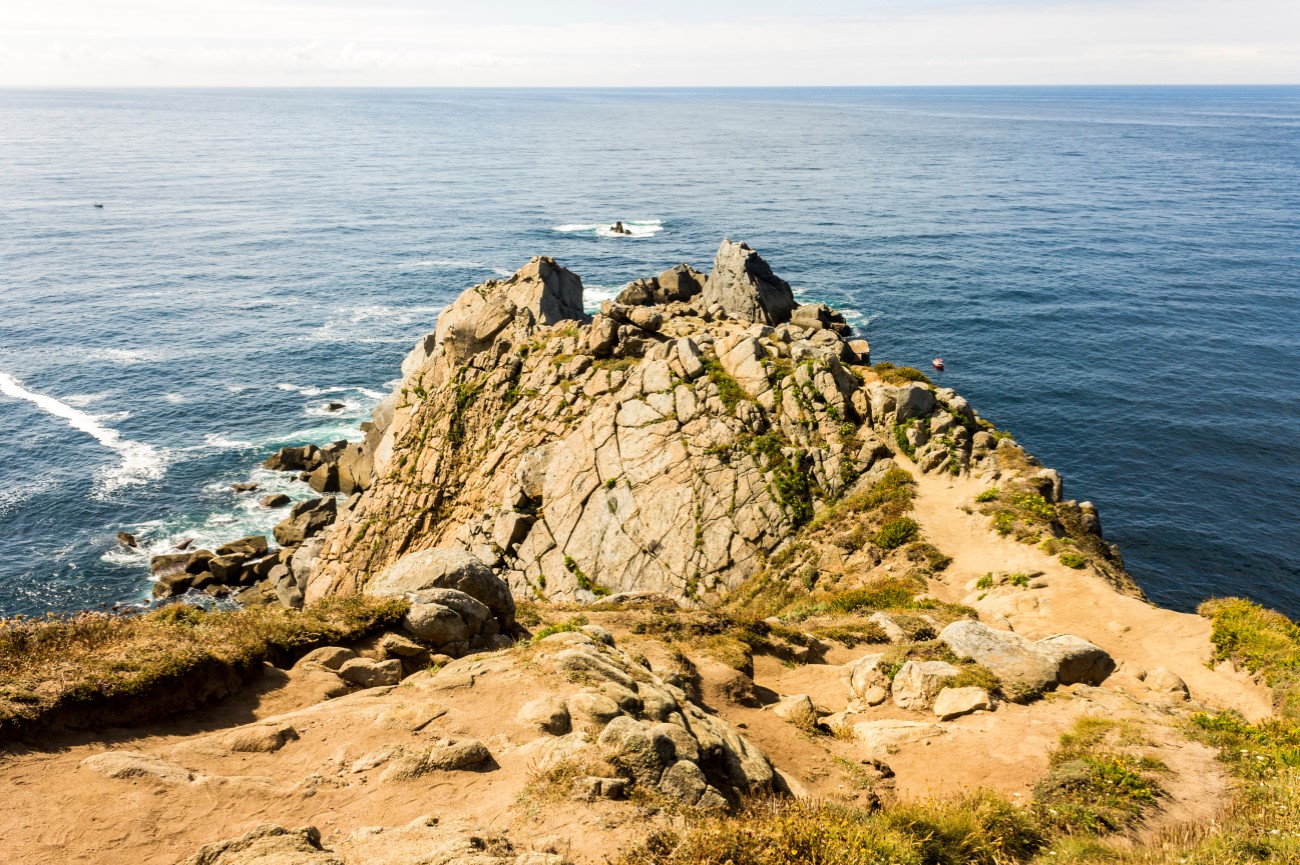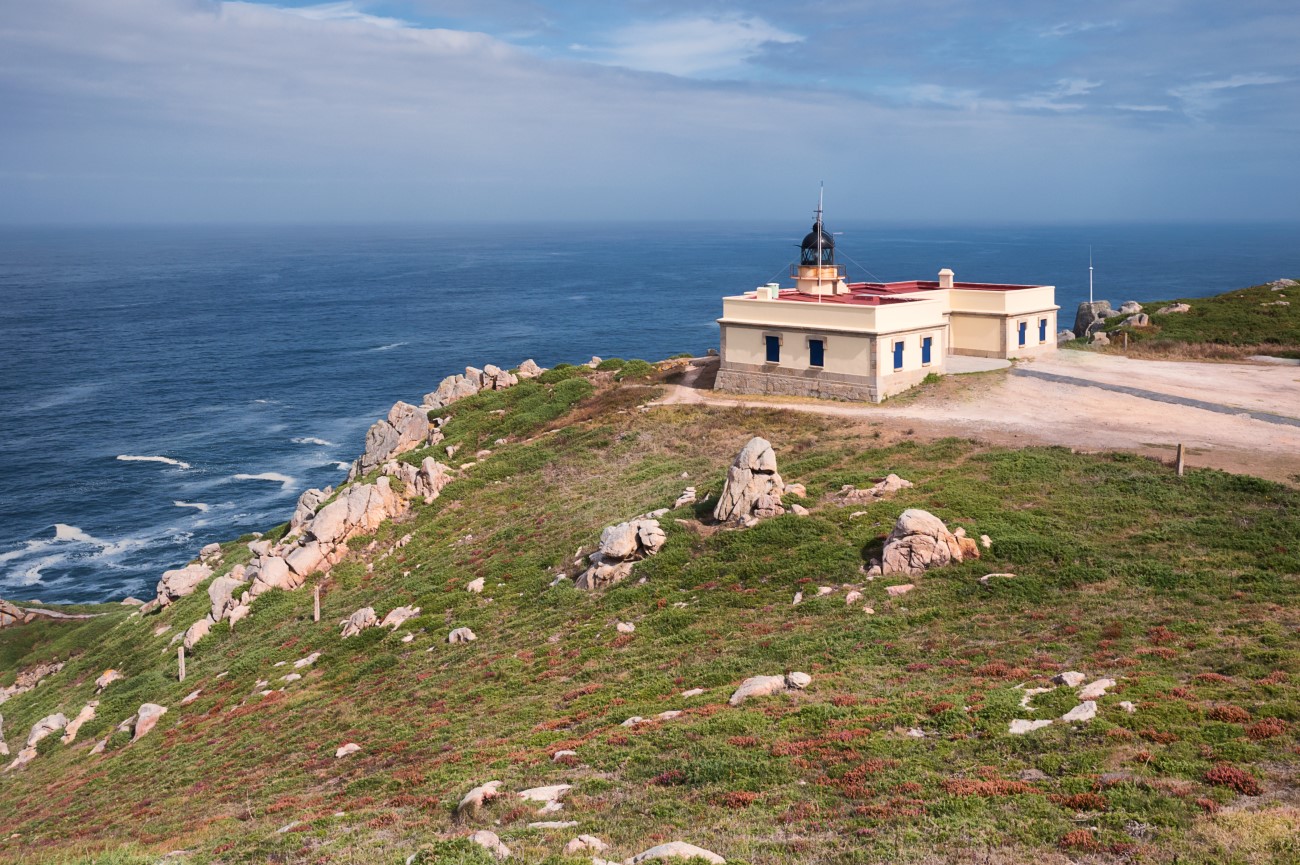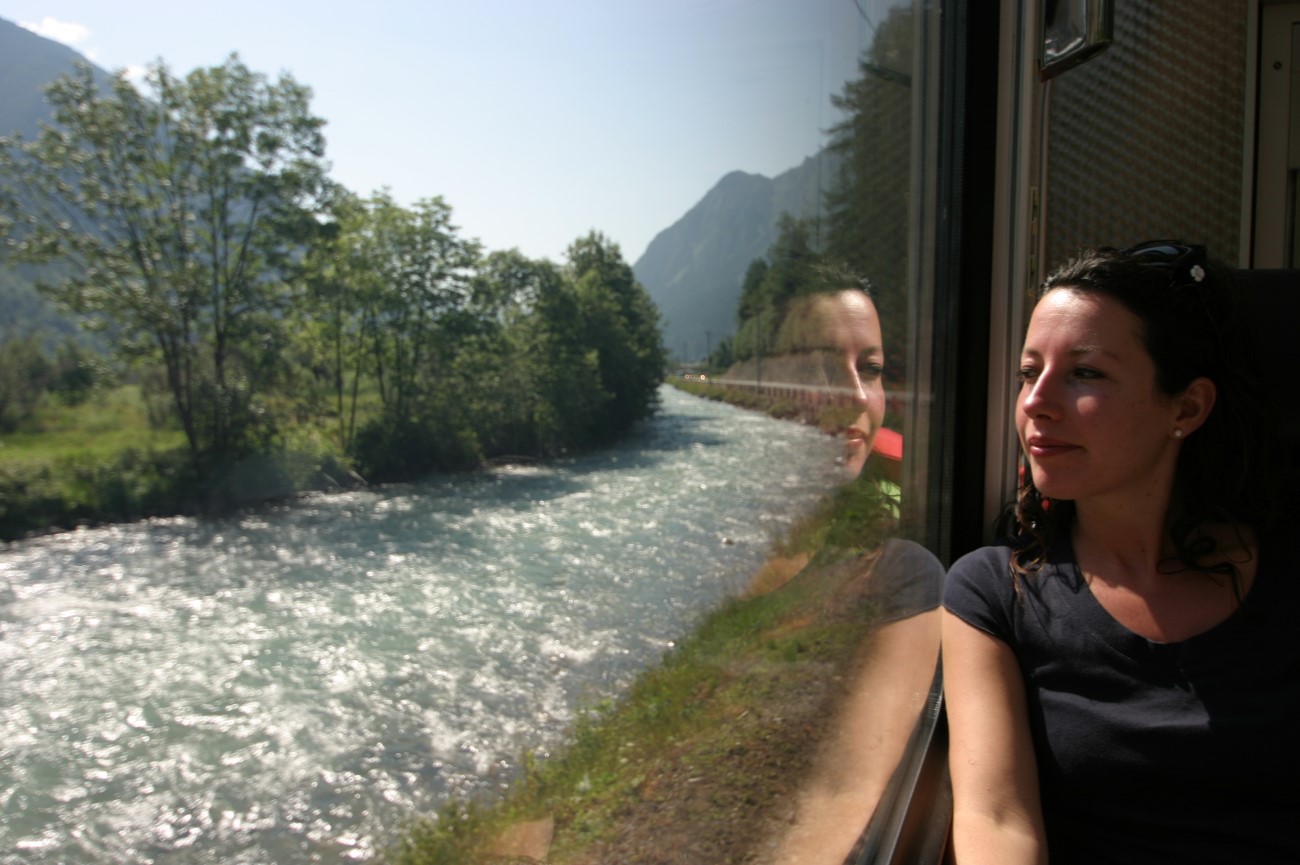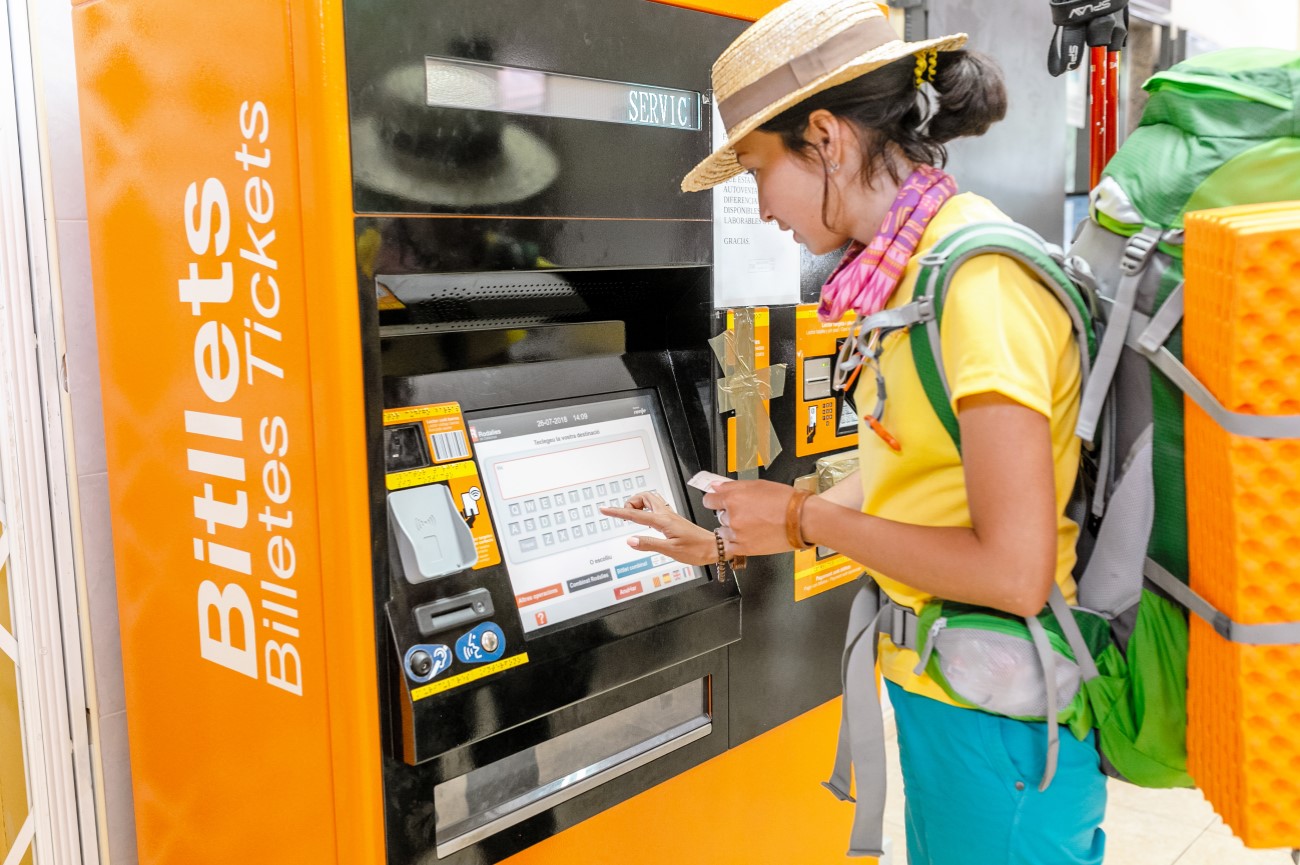Slow Train Travel in Northern Spain: Narrow-Gauge Railways
Enjoy a slow-paced journey through the North of Spain with the Feve trains. Often hidden from railway maps, these trains run through narrow-gauge lines that measure only 1000mm. Established in 1965, they extend from Bilbao, in the Basque country, to Ferrol, in Galicia. Along the way, there are more than 100 stops where passengers can jump on and off.
Many of the stations feature stunning stained-glass windows such as the one in Bilbao and Santander.
With highways and flights connecting most cities these days, it may seem a little crazy to go on this lengthy railway journey, but the landscape views in between the Picos de Europa mountains and the sea, plus the affordable tickets, are worth every second.
Narrow-Gauge Railways Itinerary

Basque Country
Our journey begins at the Bilbao-Concordia station. If you’re planning
to explore the city for a couple of days, check out our Bilbao
Itinerary, which includes tips on what to see during your visit.
You can also prolong your trip by getting the inter-city rail from the Amara-Donostia station in San Sebastián, which travels along the coast and passes through the small fishing village of Zumaia, before going inland towards Bilbao.
Cantabria
From the Bilbao-Concordia station, hop on the Feve train to Santander. You can spend some time here enjoying the city’s pristine beaches and lively tapas bars. One dish worth trying is the chorizo a la sidra, Spanish chorizo cooked in cider. Make sure to dip the bread in that delicious leftover sauce. You can also order a plate of jamón ibérico, followed by some pintxos (tiny tapas held together with skewers) all paired with a glass of white wine.
If you want to spend a day or two exploring the city, read our Santander itinerary for tips on where to eat and where to stay. Then it’s time to catch the train to Cabezón de la Sal. Enjoy the ride on the tiny train coaches as you pass through pasture land, grazing animals, white stone churches and a knee-deep river. The carriages slowly empty and the stations start to get smaller as you approach Cabezón de la Sal.
You can book a night at the Jardín de Carrejo, a rustic three-star hotel featuring lush gardens and an abandoned canal.
Before leaving the Cantabria region, you should stop by San Vicente de la Barquera. With the Picos de Europa mountains in the background and the Cantabrian sea ahead, this fishing town is well worth the visit. It’s home to beaches and a charming old town featuring Renaissance palaces and a medieval castle. For lunch or dinner, head to Boga Boga, a local seafood restaurant famous for its lobster and monkfish stew.
Asturias
From San Vicente, hop back on the train towards the Asturias region. The first stop on this route is Ribadesella, a lovely seaside town and the ideal place to sample some ciders. While you’re here, make sure to visit a sidrería (cider house) and watch the experienced escanciador (cider pourer) fill your glass from high above. This introduces oxygen into the drink and helps give its staple crispness. After your welcome drink, stop by Casa Basilio for lunch. Then, take a walk along the River Sella, a sweeping “S'' watercourse that flows into the sea. From here, you can spot the Picos de Europa mountains rising in the distance. As the sun sets, make your way to the rocky formations of Acantilados de Castro Arenas.
You can spend the night at Bajo los Tilos, a charming bed and breakfast located amid the mountains.
Wake up early and return to the Feve train. This is where the journey gets wilder, as you’ll pass through rough tunnels and green fields scattered with orchards and hórreos (granaries resting on stone pillars). Along the way, you’ll often spot people canoeing in the river or enjoying a glass of cider on the train’s platforms.
Jump off at the small town of Infiesto and order a homemade meal at Pliego Meson El Horru, before ending the night at La Posada de Barro or further on at El Gran Sueño, a small guesthouse overlooking the Picos de Europa.
Next stop is Oviedo, Asturias’ capital. There’s a lot to see in this medieval city, including a cathedral and a lively food market. Order another cider and don’t miss the regional delicacies, such as the Fabada, a bean stew served with spicy Asturian sausage. You can follow our Oviedo Itinerary to discover the best things to do in the city, including restaurants and hotel recommendations. Pack some cheese for the journey as the train continues under tiny bridges and enters deep green valleys.
Other must-stops in Asturias are Cudillero, a picturesque fishing village facing the ocean, Cadavedo with its scenic beaches, and Navia, famous for its coastal paths.
Spend the night in Navia at the Hacienda Llamabúa and then continue along to Ribadeo, a harbour town that stands in between Asturias and Galicia. It’s famous for its delicious seafood, so make sure to try some while you’re here. You can spend the night at the four-star hotel Parador or a country-style guesthouse like A Cortiña.
Don’t leave without a visit to the Praia As Catedrais, a beach with stunning rock formations.
Galicia
This slow, peaceful adventure comes to an end as you approach the region
of Galicia. You can stop at the charming seaside village of Viveiro and
then head to Loiba. Here a scenic 2 km walk awaits, crossing eucalyptus
woods until it reaches Praia do Picón. At this dramatic beach, you’ll
find “the most beautiful bench in the world”, where you can rest for as
long as you want. Enjoy the breathtaking views over the ocean as the sun
sets and then get a ride to the Semáforo de Bares hotel where you can
spend the night. From here you can hike to Punta de Estaca de Bares—one
of Spain’s most spectacular viewpoints.
Back on the train, hop off at Ortigueira and spend the night at the nearby El Castaño Dormilón. The journey ends in Ferrol, where you can visit several museums and a Neoclassical church or get a ride to Mirador Cabo Prior for incredible views over the sea.
Duration
This train journey takes about 19 hours at its fastest, from beginning to end. Of course, you don’t have to do it all in one go, and it would be hard to do so with the schedule restrictions and train changes. There are more than 100 stops along the way, including tiny villages with rural guesthouses where you can spend the night. The duration will depend on how many stops you make, but on average it can take you about a week to complete the journey from Bilbao to Ferrol. You can choose to start your journey in any of the stops we’ve mentioned above or follow the route in reverse from Ferrol to Bilbao.
Schedules and Tickets
The narrow-gauge railways go across Spain’s Green Coast connecting Bilbao (Basque country) to Ferrol (Galicia). It’s best to book your train tickets as you go, carefully checking routes and timetables online or directly at the stations. Some destinations are often in the middle of nowhere, so there are few services available. Before leaving, make sure to check if you have to change trains.
If departing from Bilbao, you’ll spend around €50 on trains. Most of the tracks you’ll travel are also used by the luxurious El Transcantábrico train, but the journey is much more affordable. You can buy individual tickets for a specific destination every morning. For more information about schedules and tickets see the Renfe website.


